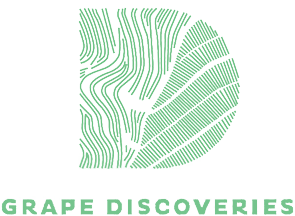Miguel Roquette, diplomat for the Douro
The Douro has no shortage of beautiful wine properties, but Quinta do Crasto is one of the most spectacular of them all. ‘Crasto’ is also an international reference for the fine wines of this great Portuguese wine region.
A large share of the credit is due to Miguel Roquette, Quinta do Crasto’s charismatic Export Manager. The brand exports to fifty-four countries, with the US, Brazil and the UK its three main export markets.
In June I met Roquette for a tour of the property and a conversation on the terrace of the quinta’s main house. The view is sensational, with terraced vineyards tumbling down to the River Douro. Castro is a Portuguese variant of the Latin term for a fort, ‘castrum’. The Romans had a strategic fort on the hill here with a 360º view of anyone going up or down river. Traces of a Roman grape treading trough have been discovered in the property’s kitchen garden. The Quinta do Crasto brand owns two hundred hectares of vineyard in the Douro, including over a hundred in the Douro Superior, making it one of the region’s largest vineyard owners.
Roquette tells me he first drank Port at three months old, adding “Port is in my blood. We will always be Port producers.” Roquette is a member of the fourth generation of his family to own Quinta do Crasto, since the property was acquired in 1918 by his mother’s ancestor, Constantino de Almeida, an important Port shipper. The family are not the first owners however, as the quinta’s records as a wine estate reach back to 1615!
Miguel Roquette describes his father Jorge as “a visionary, who in the early 1980s began investing in the property and planting new vines. My father realised the future of the Douro would not only be in Port but equally in dry wines.” Today, over 80% of the company’s production is in these dry wines. Jorge was also one of the original Douro Boys, the group of five forward-thinking wine producers who, in 2003, decided “we needed to hold hands and push.” Quinta do Crasto is still a member of this select promotional body who have now spent nearly two decades travelling the world together to successfully build the reputation of Douro wines.
Roquette believes the Douro is “currently at 60% of our potential.” Although often considered the world’s oldest regulated wine region, for dry wines it is one of the youngest, with only twenty or thirty years’ experience in producing quality wines. “We are involved in a learning process.”
The quinta produced its first dry wine in 1994. Due to a strike, the crusher which had been ordered for the vintage did not arrive in time from France, and so the grapes were trodden by foot, in time-honoured Douro fashion. The following year, the quinta bottled its first mono-varietal Touriga Nacional wine. Roquette sent a couple of bottles to wine writer Jancis Robinson. Impressed, she wrote a nice article about Quinta do Crasto in the Financial Times. At lunch later, we taste a bottle of the Touriga Nacional 2015, an elegant wine, with notes of spice and red fruit.
The new generation in the Douro are “more open-minded and not afraid to share.” Many of the region’s wine producers and winemakers are not only cousins or friends, but equally colleagues who work together and compete with each other.
What is it that makes Quinta do Crasto wines so exceptional, so complex and intense? Undoubtedly the enormous diversity of winemaking possibilities offered by the property’s terroir: altitudes which range from river level to 500 metres, different sun exposures, and more than sixty grape varieties, some block planted, some mixed. Manuel Lobo, the brand’s winemaker, refers to the property and these winemaking possibilities as a “puzzle” whose pieces he fits together.
“We are convinced Douro wines have enormous ageing potential. Old vines are the most important asset we have in the Douro,” Roquette continues. At Crasto, an ‘old vine’ often means over sixty years. A remarkable example is the Vinha Maria Teresa vineyard plot, which has no less than fifty-three different varieties, with most plants over a hundred and ten years old. Crasto completed a vineyard mapping project a few months ago. In the future it will be possible to replace each plant when it dies with the exact same clone. Roquette describes this famous plot as “a fantastic expression of terroir.”
For now the Covid-19 pandemic is slowing things down. The brand’s exports have been hit with the worldwide drop in restaurant and bar consumption, and the Douro is suffering from weak tourism, Portugal’s largest industry. In a ‘normal’ year, the property receives so many requests to visit it is not always possible to welcome everyone. The lucky ones, however, become enthusiastic brand ambassadors.
Roquette is confident about Quinta do Crasto’s medium-term future. Over the last few years the company has made significant investments in a state-of-the-art winery and a large temperature-controlled oak room. He is looking forward to the day when travel will become easier again and he will be able to tell the world about Quinta do Crasto’s remarkable wines.
Originally published in I Love Douro, September 2020


